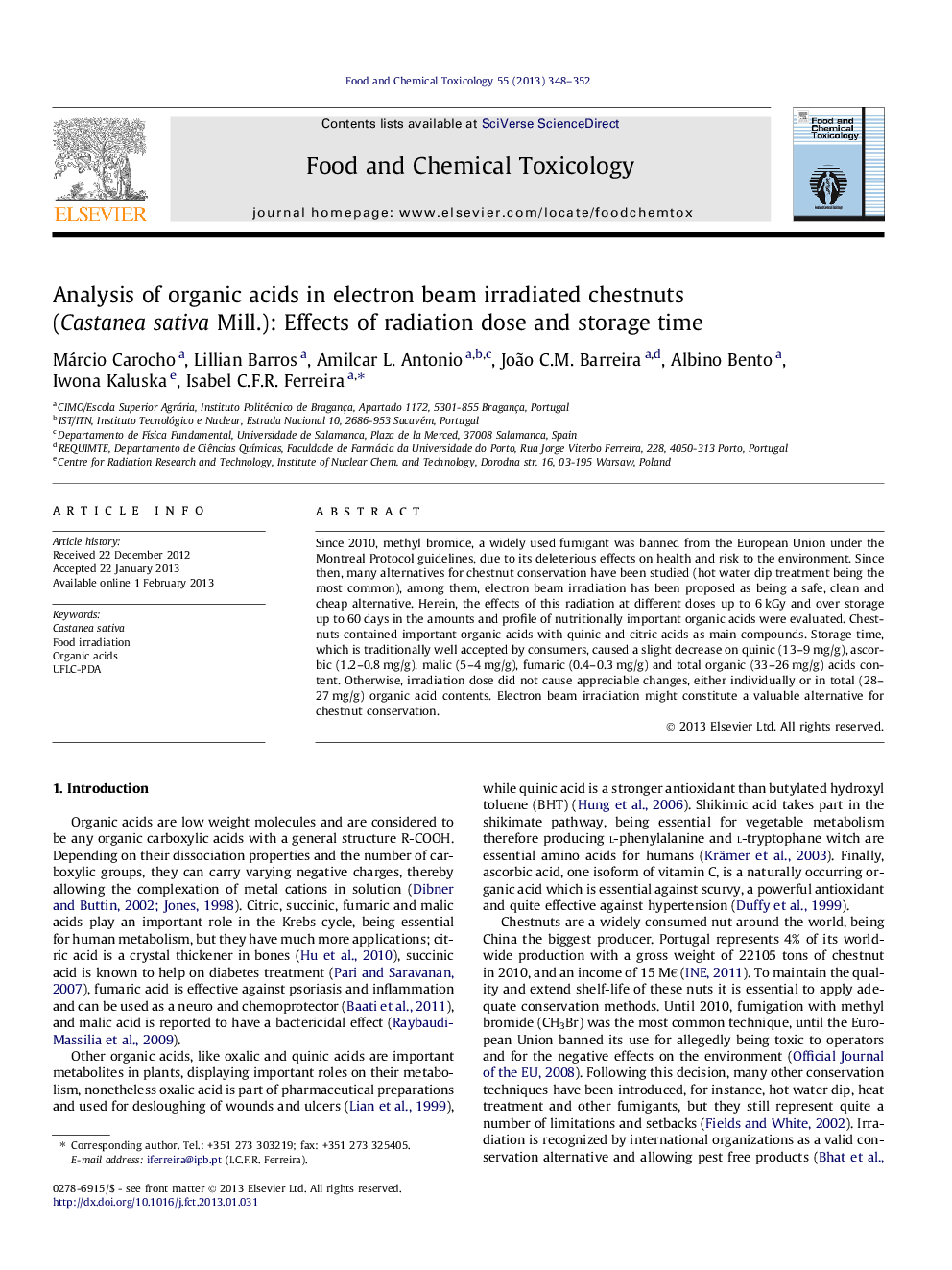| Article ID | Journal | Published Year | Pages | File Type |
|---|---|---|---|---|
| 5851560 | Food and Chemical Toxicology | 2013 | 5 Pages |
Since 2010, methyl bromide, a widely used fumigant was banned from the European Union under the Montreal Protocol guidelines, due to its deleterious effects on health and risk to the environment. Since then, many alternatives for chestnut conservation have been studied (hot water dip treatment being the most common), among them, electron beam irradiation has been proposed as being a safe, clean and cheap alternative. Herein, the effects of this radiation at different doses up to 6Â kGy and over storage up to 60Â days in the amounts and profile of nutritionally important organic acids were evaluated. Chestnuts contained important organic acids with quinic and citric acids as main compounds. Storage time, which is traditionally well accepted by consumers, caused a slight decrease on quinic (13-9Â mg/g), ascorbic (1.2-0.8Â mg/g), malic (5-4Â mg/g), fumaric (0.4-0.3Â mg/g) and total organic (33-26Â mg/g) acids content. Otherwise, irradiation dose did not cause appreciable changes, either individually or in total (28-27Â mg/g) organic acid contents. Electron beam irradiation might constitute a valuable alternative for chestnut conservation.
⺠Electron beam irradiation was applied to Portuguese chestnuts. ⺠A chromatographic technique was used for organic acids analysis. ⺠Principal components analysis was applied to evaluate irradiation and storage effects. ⺠Irradiated samples seemed to preserve organic acids content. ⺠Storage time seemed to induce a slight decrease on organic acids.
